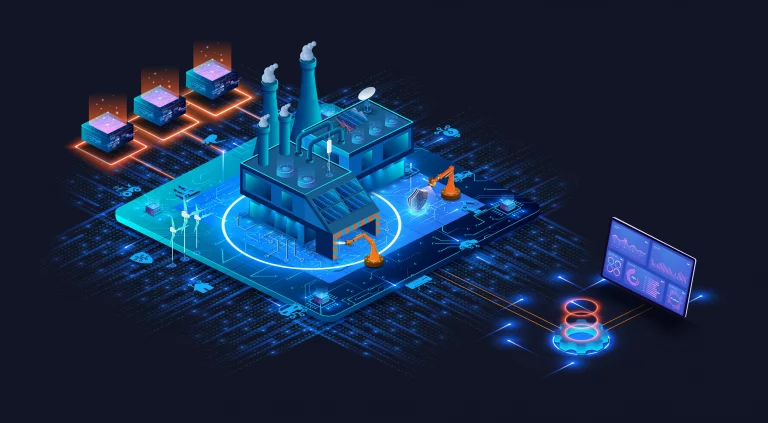Sep 4, 2024
Digitalization push in the process industry
The process industry includes sectors such as the pharmaceutical and chemical industries, where raw materials are converted into products through chemical, physical, or biological processes. The VDI/VDE/NAMUR 2658 series of guidelines defines recommendations for automation concepts for modular systems, interfaces, and information models that herald a new era of digitalization in the process industry. The manufacturing and process industries have different automation and system design requirements, but similar needs and solutions.

The VDI/VDE/NAMUR 2658 series of guidelines provides a framework for modular systems and information models that increase production flexibility and improve production efficiency. It is critical for process industries looking to improve ROI and increase plant efficiency through modular and flexible production approaches. By standardizing interfaces and data models, the VDI/VDE/NAMUR 2658 guidelines enable better interoperability between components from different manufacturers and simplify the expansion or reconfiguration of process plants.
NAMUR Open Architecture (NOA) was developed in parallel. Its goal is to make it easy and safe to use production data to monitor and optimize systems and devices.
Components of the Guidelines
The series consists of several concepts that describe technical solutions. They are used together to improve manufacturing processes through modular automation.
The guidelines support the development and implementation of modular process units known as Process Equipment Assembly (PEA). Specifically, PEA refers to the automation technology of individual modular units designed to perform specific process tasks within a plant. This modularization is intended to make the planning, launching and operation of process plants easier and more flexible. PEAs are integrated into a process orchestration layer (POL). This is a higher-level control layer that coordinates and manages the various PEAs. In addition, the Module Type Package (MTP), a standardized file format derived from AutomationML, is defined and used for integration between the PEA and the POL. It allows modules to be easily integrated into the overall system.
This set of recommendations fundamentally changes the interaction between process engineering and automation technology and represents a paradigm shift in the process industry.
Comparability of solutions in the manufacturing and process industries
Software-defined production in the manufacturing industry must also implement a process orchestration layer (POL) and address the aspects required in the NAMUR Open Architecture (NOA). Following the software-defined paradigm, the process industry's Module Type Package (MTP) could also be realized through digital twins and the associated microservices.
With its Ascon Qube software, Ascon Systems offers a solution to build this bridge. From a technological perspective, Ascon Systems' approach is to separate hardware and process control in production, whether in manufacturing or process industries. This dissolves the rigid and inflexible connections between hardware and software, as implemented in traditional automation solutions, and replaces them with a network of modules and services.

The underlying hardware functions are abstracted, and the actual capabilities are determined purely by the software. This decoupling of hardware and capabilities or behavior is also the technical basis for the apps on your smartphone, for example. The smartphone's built-in hardware sensors are used by apps as spirit levels, business card scanners, sound meters, and so on. A piece of hardware no longer executes a program (1:1), but a piece of hardware is dynamically used for a variety of applications (1:n). To achieve software-defined production, it is therefore necessary to decouple the physical modules of the production systems (hardware) from the software that runs on them. This is exactly what the Ascon Qube was designed for.
In today's production systems, however, hardware and software, including process control and consideration of company-specific communication standards, are often very closely linked and programmed on PLCs. This prevents the full potential of digitalization from being realized. By separating hardware and process control and following the software-defined paradigm, it is possible to implement a software service architecture that replaces the traditional automation pyramid with its rigid point-to-point connections and in which the behavior and interaction of modules is flexibly and efficiently orchestrated at a higher software level.
Ascon Systems shows a migration path: from traditional to modern (keyword: OT goes IT). A step-by-step approach makes sense when introducing new technologies.
For the process industry, for example, this could mean reading out existing MTP implementations via Ascon Connectivity and making analysis, AI or other tools available independent of the manufacturer. In the future, this rigid, file-based data communication can then be transferred to a service environment (XaaS), allowing processes to be controlled online in an optimized way. The Ascon Systems technology can be integrated adaptively.
Experience can be gained, functionalities can be extended and new features can be integrated. It does not always have to be the remote control of multi-variant and/or complex processes. Quality and documentation scenarios, for example, are worthwhile: Process monitoring and documentation of batches, with the ability to react flexibly to variations. Another promising area is the implementation of solutions that enable faster commissioning through the use of prefabricated function blocks. These are easy to use independently of the system and can be loaded remotely (no on-site programming), which also reduces errors during commissioning and operation. Such implementations enable the consistency of information that is increasingly required in today's enterprises. The information is available and can be used easily.


